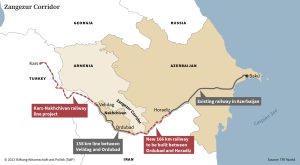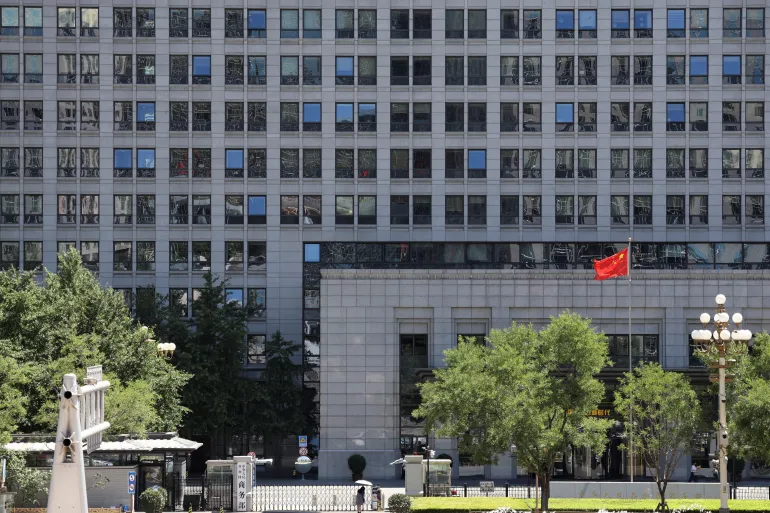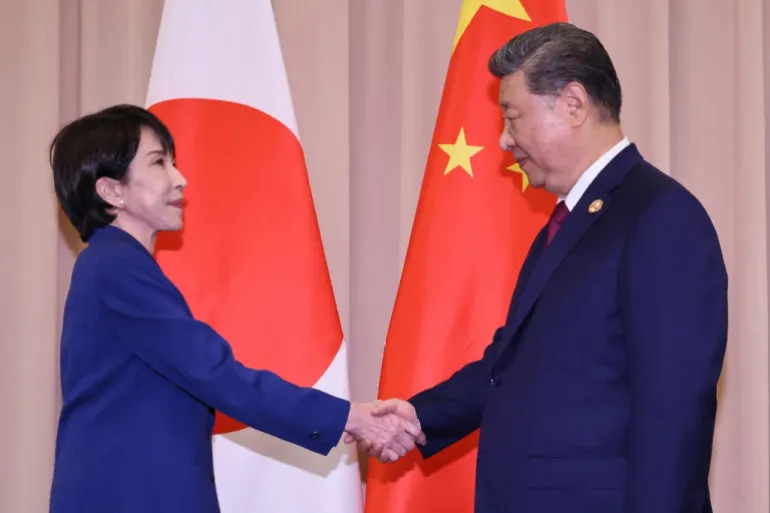ANALYSIS: TRIPPwire in the Caucasus. Why the New “Trump Route” Shakes Up the Region.

The South Caucasus just got a whole lot more complicated. Armenia and Azerbaijan, neighbors that have spent three decades locked in bitter conflict, stood shoulder-to-shoulder at the White House earlier this month. With Donald Trump grinning in the middle, Prime Minister Nikol Pashinyan and President Ilham Aliyev signed what Washington is selling as a “landmark peace deal.”
At the heart of the deal? Not lofty pledges about reconciliation or cultural healing, but a road. A very specific road: the so-called Trump Route for International Peace and Prosperity (TRIPP), better known to policy wonks as the Zangezur Corridor.
It’s a stretch of Armenian land in Syunik province that links mainland Azerbaijan to its cut-off Nakhichevan exclave on the Iranian-Turkish border. Control of this passage has been Azerbaijan’s red line for years. Armenia resisted, fearing it would lose sovereignty over its south. Now, by leasing the route to the United States, Yerevan has found a way to give Baku what it wants—unimpeded access—while pretending it hasn’t ceded control. Cue the applause in Washington.
On a map, TRIPP looks like a minor line. On the ground, it’s a geopolitical earthquake.
- For Azerbaijan, it finally delivers the “land bridge” connecting its divided territory.
- For Armenia, it’s a political gamble: outsourcing management to the US keeps up the façade of sovereignty while enraging nationalist critics at home.
- For the US, it’s a jackpot. The corridor gives Washington a literal foothold in a region Russia has long claimed as its “backyard.” It’s also a new lever against Iran, whose northern provinces are packed with restless Azeris.

And let’s not forget Turkey, which has pushed for this corridor for years. A direct road between Baku and Nakhichevan means a direct road from Turkey to the Turkic heartlands of Central Asia. Ankara couldn’t have drawn it up better.
Moscow once called the shots in the Caucasus. Now it’s looking more like a bystander. Its forces did nothing as Azerbaijan steamrolled Nagorno-Karabakh in 2023, and now US-Armenian handshakes are happening right under its nose. With Russian troops bogged down in Ukraine, the Kremlin’s “Near Abroad” is slipping away.
Iran, meanwhile, is furious. The idea of a US-managed corridor hugging its northern border is a nightmare scenario. Tehran fears not just American influence but also that Azerbaijan could stoke separatist dreams among Iran’s own Azeri population. Iranian officials are already rattling sabers and staging military drills near Armenia.
The TRIPP deal is also a gut punch to Georgia. For years, Tbilisi sold itself as the key East-West transit hub, hosting pipelines and railways that bypass Russia. But if goods and energy can now flow straight through Azerbaijan and Armenia, Georgia risks being sidelined. No wonder Georgian leaders sound supportive in public but privately fear they’ve been cut out of the game.
Inside Armenia, Pashinyan’s move looks less like statesmanship and more like survival. After losing Artsakh and presiding over the exodus of 100,000 Karabakh Armenians, he’s walking on political thin ice. His approval ratings hover in the basement, and the opposition is hammering him for “selling out” Armenia to both Azerbaijan and Washington.
By putting the US in charge of TRIPP’s commercial management, Pashinyan hopes to buy peace with Baku and cover himself at home. But with only 13% of Armenians backing him, it’s unclear if this corridor is his road to stability—or his road to political ruin.
The Zangezur Corridor isn’t just a transport link. It’s a test case for whether outside powers can redraw the geopolitics of the Caucasus. If TRIPP takes off, Washington gains leverage, Turkey cements its eastward highway, Azerbaijan gets its land bridge, and Armenia clings to the illusion of sovereignty.
The losers? Russia, Iran—and possibly Armenia itself, if the political blowback at home turns into another crisis for Pashinyan.
For now, one thing is clear: what looks like a simple road on the map is actually the region’s newest fault line, and everyone from Beijing to Brussels is watching to see if it holds—or explodes.









The latest news in your social feeds
Subscribe to our social media platforms to stay tuned